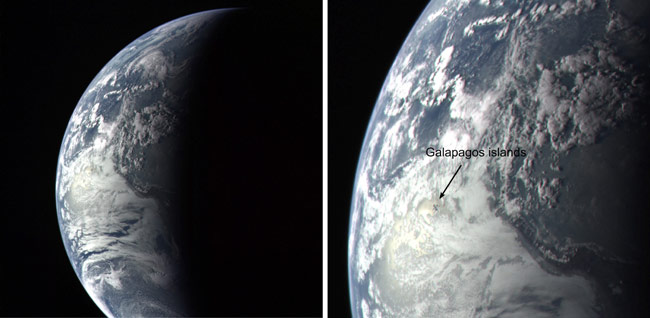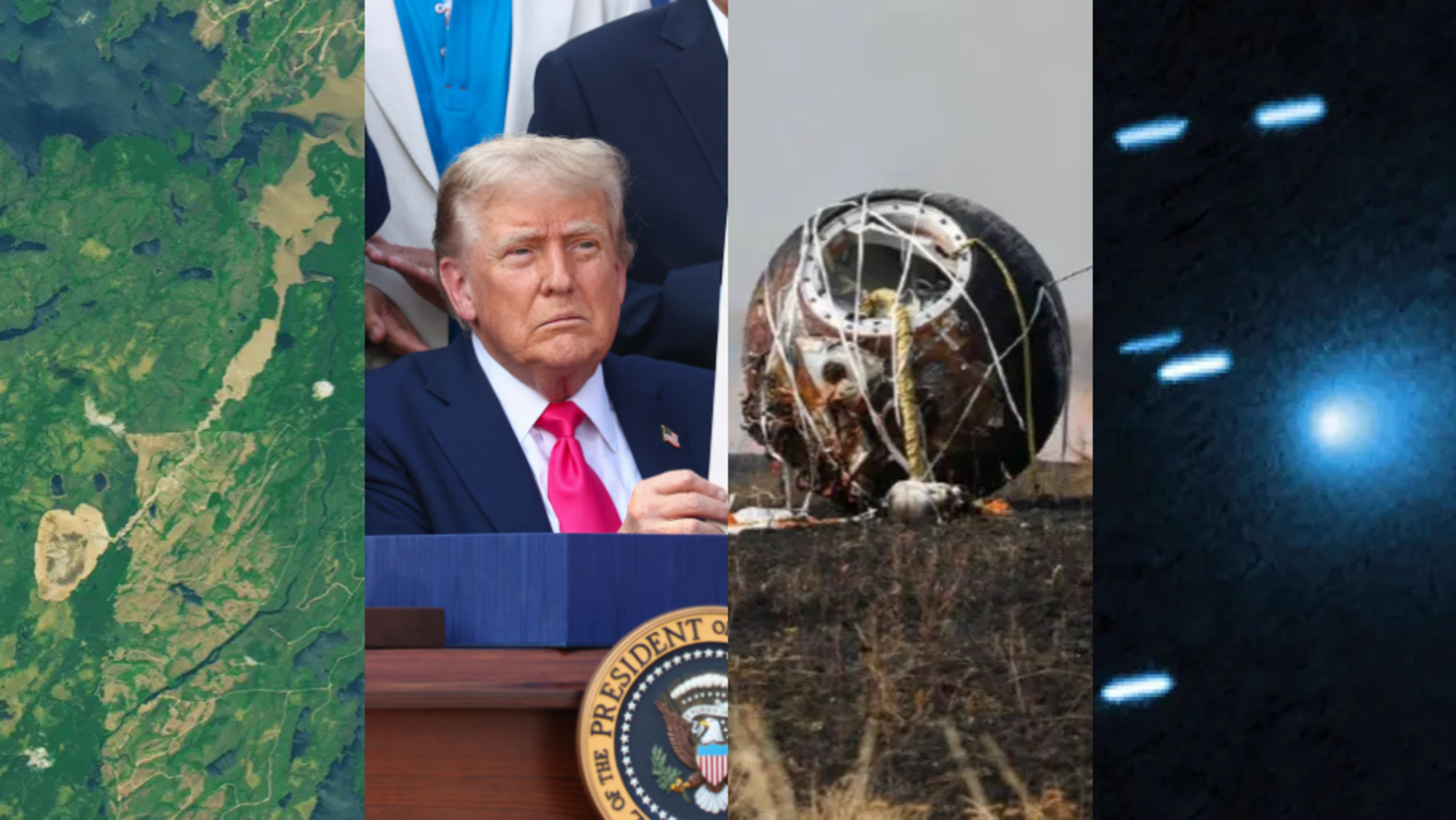As the World Turns: MESSENGER's Home Movie of Earth

A probebound for the planet Mercury took one parting look at its home world, recordingimages during an Earth flyby that mission scientists have assembled into aneye-catching film.
During the firstof a series of planetary flybys - though the only one to visit Earth - NASA'sMESSENGER spacecraft photographed Earth with enough detail to pick out theGalapagos Islands from 34,692 miles (55,831 kilometers) away.
"The moviewas kind of a bonus, really," Louise Prockter, MESSENGER's deputy instrumentscientist, told SPACE.com. "We were just very pleased everything went exactlyas planned."
In additionto the Galapagos Islands, MESSENGER's flyby filmshows a crisp Earth and the Sun's reflection off the Pacific Ocean, which movesas the planet rotates through one full turn. The spacecraft also photographedEarth in the near-infrared wavelengths, giving a different view on otherwisefamiliar continents.

"When we dothese flybys, we need everything to work," said Prockter, who planned the MDIS camerasequences for the flyby, adding that the first science MESSENGER will do atMercury occurs during a flyby.
The Earthflyby was the first of six planned for MESSENGER as it winds its way Sunwardtowards Mercury. The probe will fly past Venus twice and Mercury three timesbefore finally settling into orbit around the rocky planet in 2011. The gravityassists the probe receives during each planetary pass help push it deeper intothe inner solar system.
Launchedon Aug. 3, 2004, MESSENGER swung past Earth almost one year later on Aug. 2,2005. But it took weeks for mission scientists to compile the images taken bythe spacecraft's Mercury Dual Imaging System (MDIS) into the final movie.
Breaking space news, the latest updates on rocket launches, skywatching events and more!
The processis one-part test and one-part practice. On one hand, mission scientists usedthe Earth flyby to calibrate MESSENGER's instruments and make sure they were inworking order. But the flyby also gave researchers their first opportunity towork with in-flight images - such as MDIS photographs of Earth's moon alsotaken during the rendezvous - that resemble what they hope to see at Mercury.
"We do alot of testing on the ground, but there's only so much we could do beforelaunch," said Prockter. "There are always some little things that you didn'texpect."
Unlike thetwo upcoming Venus flybys, only the Earth pass allowed researchers to make fulluse of MESSENGER's MDIS camera, as well as several of its six other instruments.
"Ourinstrument is not designed to look at Venus." Procktor said. "All we're goingto see is a sort of bright, fuzzy blob."
MESSENGERalso used its atmospheric and surface composition spectrometer to scan themoon, as well as particle and magnetic field instruments to study Earth's magnetosphere,researchers said.
"It'scertainly performing to our highest expectations," Prockter said of MDIS, theprobe's wide-angle camera. "We're going to a lot of effort to improve what wecan."
MESSENGERis set to swing past Venus in October 2006, then again in June 2007 beforefinally reaching Mercury. But before the probe enters orbit around the small,rocky planet, it will execute three flybys - the first in January 2008, thenagain in October 2008, and finally in September 2009. The spacecraft isexpected to enter orbit around Mercury in March 2011 as it passes over planet'sdark side, providing the first-ever up close look at the region.
"For me, it'samazing that we've never seen the back side of Mercury close up," Procktersaid, adding that she's looking forward to it. "We don't expect it to be [that]different from the rest of Mercury, but we still don't know. It certainly isquite mysterious."

Tariq is the award-winning Editor-in-Chief of Space.com and joined the team in 2001. He covers human spaceflight, as well as skywatching and entertainment. He became Space.com's Editor-in-Chief in 2019. Before joining Space.com, Tariq was a staff reporter for The Los Angeles Times covering education and city beats in La Habra, Fullerton and Huntington Beach. He's a recipient of the 2022 Harry Kolcum Award for excellence in space reporting and the 2025 Space Pioneer Award from the National Space Society. He is an Eagle Scout and Space Camp alum with journalism degrees from the USC and NYU. You can find Tariq at Space.com and as the co-host to the This Week In Space podcast on the TWiT network. To see his latest project, you can follow Tariq on Twitter @tariqjmalik.
